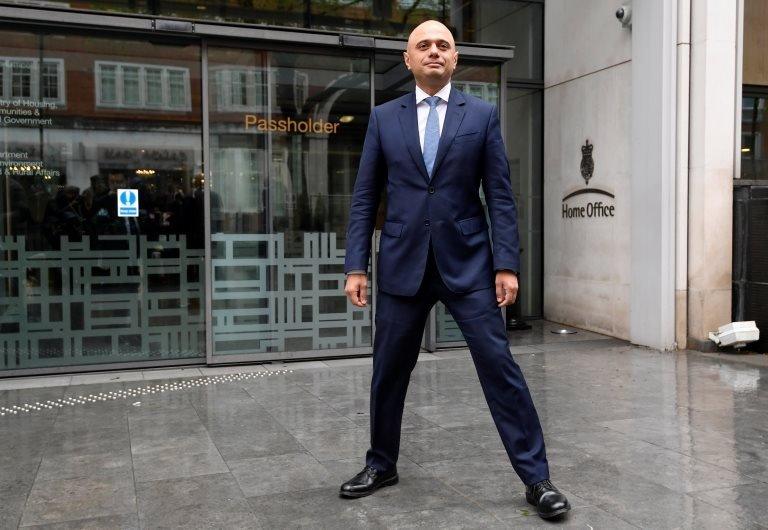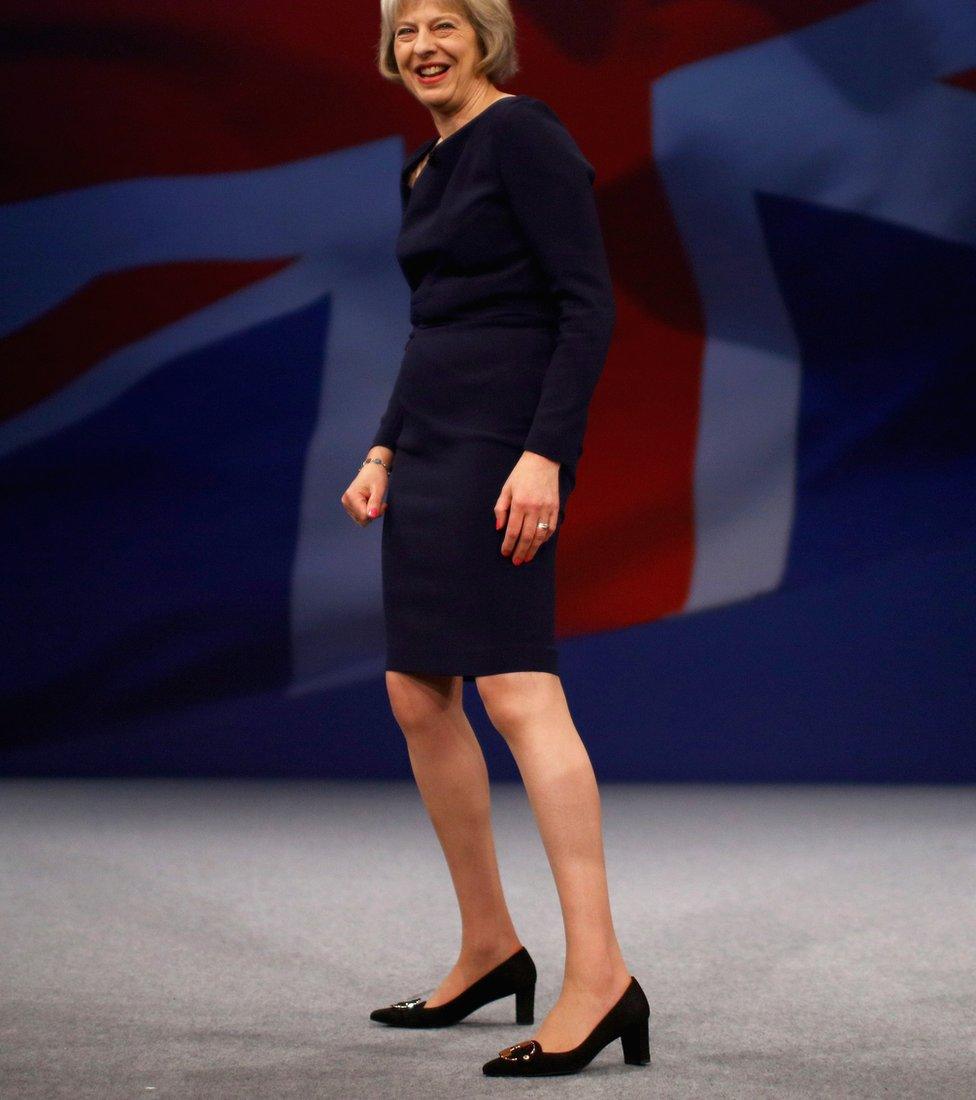When is it OK to do a 'power pose'?
- Published

Home Secretary Sajid Javid was snapped with his feet planted wide apart outside his new office, prompting speculation about whether he was "power posing".
Standing like a heavyweight boxer about to enter the ring is an actual management technique - albeit a slightly controversial one.
Those who witnessed Mr Javid's brief turn for the cameras on Monday seriously doubt whether he was deliberately striking a dominant pose.
"A snapper asked him to step to the left and caught him mid-move - but, hey, that's life in front of the lens," said a source close to the new home secretary.
There was a mini-epidemic of power posing at the top of the Conservative Party a few years ago, which prompted much sniggering in the media and speculation about whether they had all been sent on the same management awayday.
Mr Javid's old boss at the Treasury, George Osborne, adopted a particularly dramatic stance at the 2015 Tory conference, although the feet pointing inward might take away some of the effect...

Theresa May appeared to go in for a spot of power posing at the same event.

The then Prime Minister, David Cameron, went full East End gang boss at a photo shoot during the 2016 EU referendum campaign.

Advocates of power posing claim it can boost testosterone and adrenaline levels - and help establish your authority over colleagues, particularly among women executives who, they say, often have more submissive body language than their male colleagues.
Harvard professor Amy Cuddy, who came up with the theory in 2010, had observed some of her female students entering a room with hunched shoulders and defensive postures, while their male counterparts sprawled across their desks in a self-assured, swaggering way.
She investigated whether changing the way you occupy your physical space could boost confidence.
"Posing in high power displays" led to an "elevation of the dominance hormone testosterone, reduction of the stress hormone cortisol, and increases in behaviourally demonstrated risk tolerance and feelings of power", she and her co-authors wrote.

'The proud peacock fans his tail feathers'
Social psychologist Amy Cuddy on how to feel confident
From Amy Cuddy's 2010 report on power poses:, external "The proud peacock fans his tail feathers in pursuit of a mate. By galloping sideways, the cat manipulates an intruder's perception of her size. The chimpanzee, asserting his hierarchical rank, holds his breath until his chest bulges.
"The executive in the boardroom crests the table with his feet, fingers interlaced behind his neck, elbows pointing outward.
"Humans and other animals display power and dominance through expansive nonverbal displays, and these power poses are deeply intertwined with the evolutionary selection of what is 'alpha'."

Cuddy's work sparked ridicule on social media and some social scientists said they had not been able to replicate her results in their own research, although researchers at University College, London, suggested there might be something in it, external.
Nigel Nicholson, professor of Organisational Behaviour at London Business School, thinks Sajid Javid might have had a raw deal from the press.
"I don't think he is trying to look like he is bestriding the Home Office. I don't think it is deliberately 'kingly'."
But, he adds, the fact that people have picked up on the idea of "power posing" is useful because it makes us think about non-verbal communication and the importance of posture.
Anyone in a position of power would be wise to straighten their back and "walk tall" and try to remember to make eye contact with the people they are talking to, he says.
"There is a way that some men occupy their space, the gestures that men do, how they walk with their hands by their sides," he says, which is worth studying.

Wonder Woman: Best emulated in private?
Jo Ellen Grzyb, a director of Impact Factory training, says the key is to appear natural.
"Doing a Wonder Woman pose in front of an audience looks contrived and inauthentic," she says.
"If someone can see that you have had training it is not working."
And she has some advice for those who might fancy giving themselves a little confidence boost before their next work meeting or presentation.
"Do your power posing in private, in order to help boost your confidence.
"It will have a positive psychological affect on you. But don't do it in public, please. It's embarrassing."